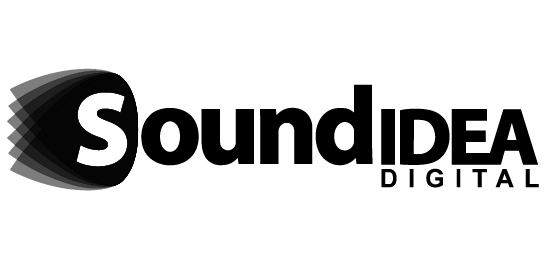
Video Production Company Johannesburg: Predictability
Picture this: You are scrolling through your TikTok feed, and an influencer appears, saying, “Stop scrolling! I just found the perfect product!” They continue to rave about how this product is life-changing, acting as though they have discovered something totally new and groundbreaking. But as they describe it in detail, with an overly confident tone, something clicks in your mind. You immediately know where this is going. A quick glance at the video caption confirms your suspicion—the hashtag ‘#ad’ confirms that this “discovery” is just another marketing pitch. Or maybe it is the all-too-familiar line from a so-called expert: “My dad’s been a dietician for years, and no one believes him when he says this…” Then, of course, the product plug follows, sprinkled with rather questionable health advice. The predictability of these marketing tactics is so familiar that it turns you off. Your brain has become finely tuned to these almost inauthentic attempts to sell, and your interest immediately fades. This scenario, along with countless other examples, highlights the growing predictability in video marketing. As viewers, we encounter a plethora of these marketing videos daily—whether from influencers or brands themselves. With this constant exposure, we have started recognising the patterns and structures in these videos almost instinctively. It has become predictable. But is this a problem, or is it part of the strategy that keeps us engaged? For companies working with a video production company Johannesburg or elsewhere, understanding the delicate balance between predictability and innovation in video marketing is essential. The challenge is how to strike the right balance to maintain viewer interest without falling into the trap of repetitiveness.
The Psychology Behind Predictability in Marketing Videos
Humans are hardwired to recognise patterns. This is a survival instinct that once helped us make sense of the world. In marketing, this psychological tendency works in favour of the content creator. When people are exposed to predictable patterns—whether it is a recurring theme in a product video, a familiar hook, or a signature style—these patterns create cognitive ease. This means that viewers can process the content effortlessly, which, in turn, can make the messaging more effective.
Predictable videos tend to evoke feelings of trust and comfort. If the style or structure of the video feels familiar, viewers are more likely to feel at ease and more willing to absorb the message. But here is the catch: Too much predictability can lead to boredom. When people can anticipate exactly what will happen next, it can diminish their interest in the content. At this point, the predictability can actually hurt the brand’s impact.
The Risks of Too Much Predictability
Over-relying on familiar content and marketing techniques can lead to what is often referred to as “ad blindness.” This happens when the audience has seen so many similar ads that they subconsciously tune them out, knowing what to expect. The result? Your video gets ignored, even if the product or service being promoted is something they might actually want or need.
The psychological principle behind ad blindness is quite simple: If something becomes too predictable, people stop paying attention to it. While predictable ads can initially build trust, over time they lose their power to engage and persuade. For companies working with a video production company Johannesburg, this risk is especially important to keep in mind. Failing to innovate can cause a brand to fall into obscurity.
Take the example of older campaigns from global brands. Many of these ads stuck to tried-and-true formulas, and while they were effective at first, the approach became stale over time. This is why constant renewal and the introduction of fresh ideas into marketing content are crucial.
Here are two examples where predictability led to disengagement and backlash:
Pepsi’s “Live For Now” Campaign Featuring Kendall Jenner (2017)
Pepsi’s “Live For Now” campaign, featuring Kendall Jenner, faced significant backlash for its portrayal of a protest scene that many perceived as trivialising social justice movements. The ad’s predictable narrative, attempting to convey a message of unity through a commercialised lens, was criticised for being tone-deaf and insensitive. The predictable use of a celebrity to convey a serious message resulted in widespread criticism and a subsequent apology from Pepsi.
Audi’s “The Daughter” Super Bowl Ad (2017)
Audi’s “The Daughter” Super Bowl ad aimed to highlight gender equality by featuring a father contemplating his daughter’s future. While the intention was to promote a progressive message, the predictable approach of using a father-daughter relationship to convey social issues was criticised for lacking depth and originality. The ad’s predictable narrative failed to resonate with many viewers, leading to mixed reactions and discussions about the effectiveness of such predictable storytelling in advertising.
The Value of Innovation in Video Marketing
There is a clear benefit to introducing new and unexpected elements into video content. Innovative approaches capture attention and often result in higher engagement. When a brand does something different—whether it is through a new video style, an unexpected twist in the narrative, or a completely novel way of presenting the product—it piques curiosity. This novelty sparks emotional reactions, such as excitement or surprise, that hold the viewer’s attention.
An example of successful innovation in video marketing is the “Real Beauty Sketches” campaign by Dove. By shifting from traditional beauty standards to a more authentic message about self-image, Dove broke away from predictable advertising formulas. This fresh perspective engaged audiences and sparked conversations around real beauty and self-perception, further amplifying the campaign’s reach. Other strong example of innovation is:
Apple’s “Crush” Campaign
Apple’s “Crush” campaign showcased the iPhone’s camera capabilities through a series of visually stunning shots. The campaign maintained Apple’s signature sleek and minimalist style but introduced innovative storytelling techniques, highlighting the product’s features in a fresh and engaging manner. This blend of predictability in style with innovative content kept the audience engaged and reinforced Apple’s brand image.
Google’s “Parisian Love” Ad
Google’s “Parisian Love” ad told a love story through a series of search queries. The ad maintained Google’s familiar interface but introduced an innovative narrative approach, engaging viewers emotionally and showcasing the brand’s capabilities in a new light. This campaign effectively balanced predictability in format with innovation in content, leading to widespread acclaim.
Finding the Right Balance: Innovation Meets Consistency
So, what is the answer? Should businesses stick to predictable formulas, or is it better to embrace innovation? The truth is, the best approach lies in finding the right balance.
Predictability does have its merits. It can build familiarity, establish trust, and reduce cognitive load, making it easier for viewers to understand and retain the marketing message. However, too much predictability can cause fatigue, disengagement, and a loss of interest. Innovation, on the other hand, can capture attention and reinvigorate an audience, but it also carries the risk of confusing or alienating viewers if the new approach does not align with their expectations.
The sweet spot is in blending both approaches. For instance, using familiar structures—such as a specific hook or narrative style—while introducing small elements of surprise can create content that is both reliable and refreshing. This way, the audience feels comfortable yet intrigued, which keeps them coming back for more.
A video production company Johannesburg can be instrumental in helping to execute this balance. By studying trends, analysing audience preferences, and experimenting with new ideas, they can help create content that strikes the right chord between predictability and innovation.
The Role of Data in Shaping Video Strategies
Data plays a significant role in determining the success of video marketing strategies. By measuring engagement, view durations, and click-through rates, marketers can identify which videos are hitting the mark and which ones might be losing their audience.
A/B testing is another useful technique. By testing two versions of a video—one with a more predictable structure and the other with a more innovative approach—marketers can gather insights into which direction resonates better with their target audience. This type of testing ensures that decisions are based on actual viewer behaviour rather than assumptions.
For those working with a video production company Johannesburg, incorporating analytics into the creative process can help refine video strategies over time. By analysing the performance of videos, companies can continuously adapt and adjust their content to find the right balance between innovation and predictability.
Conclusion: Striking the Perfect Balance
There are plenty of influencers who stick to the familiar “state the problem, present the product as the solution” marketing tactic, but they do so with innovative video ideas that align with their regular content. This balance between predictability and innovation works because the structure remains familiar, while the delivery adds something new that keeps the audience engaged.
Advertisers can achieve the same balance by incorporating familiar elements into their campaigns—whether it is a tried-and-true storyline or visual cues that audiences recognise—but with a twist that surprises and delights. It could be as simple as a shift in tone, a new format, or a clever narrative twist that aligns with the brand’s identity. This helps maintain viewer interest and prevents the content from feeling stale.
A video production company Johannesburg can assist brands in finding this balance, blending traditional marketing strategies with creative adjustments that make the difference between a video ad being skipped and one that keeps viewers hooked. Whether innovating within a familiar framework or introducing new approaches, the key is knowing when to take risks and when to rely on what works.
Struggling to find the right balance in your video marketing? Sound Idea Digital can help you figure it out. Get in touch, and let’s take the next step together.
We are a full-service Web Development and Content Production Agency in Gauteng specialising in Video Production, Animation, eLearning Content Development, Learning Management Systems, and Content Production.
Contact us for a quote. | enquiries@soundidea.co.za | https://www.soundideavideoproduction.co.za| +27 82 491 5824 |

